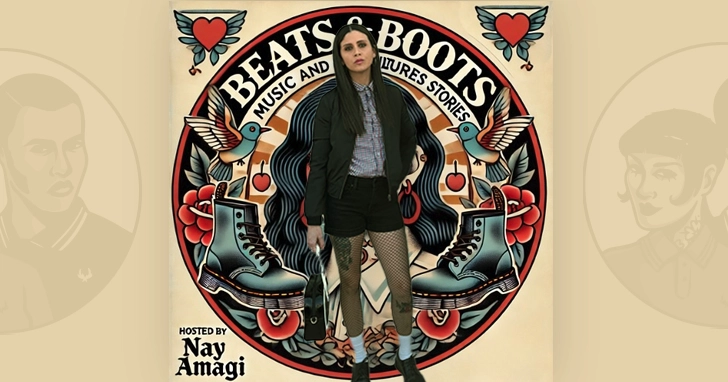In our own ‘Rude Roots’ series, we dive into the lives and passions of the amazing people in our community. Today we dive into the life and passions of Nay from Puerto Rico, now living in Florida. We had a chat about her journey in the Punk and Skinhead movements, her podcast ‘Beats & Boots,’ and the vibrant subcultures she has experienced along the way.
Background & personal journey
Hi Nay. Thanks for your time. How are you?
I am doing great. Hope you are as well. Excited about doing this interview, now I am on the other side of the table in the conversation. 🙂
You are from Puerto Rico right? How’s life there?
I was born and raised in Puerto Rico. At the age of 25, I moved to Florida. Life in Puerto Rico is beautiful, we have amazing weather, it is like summer the whole year. Any place you are, you drive 15 minutes and you have a beautiful beach to pass the day, or a river. Our culture is extremely rich. Is a mixture of cultures! We are festive and friendly. There are also many struggles, due to our political condition. We have been a territory owned by the USA since 1898. This political status greatly affects us in many ways socially, impacting directly our economical development, and many systems on the island.
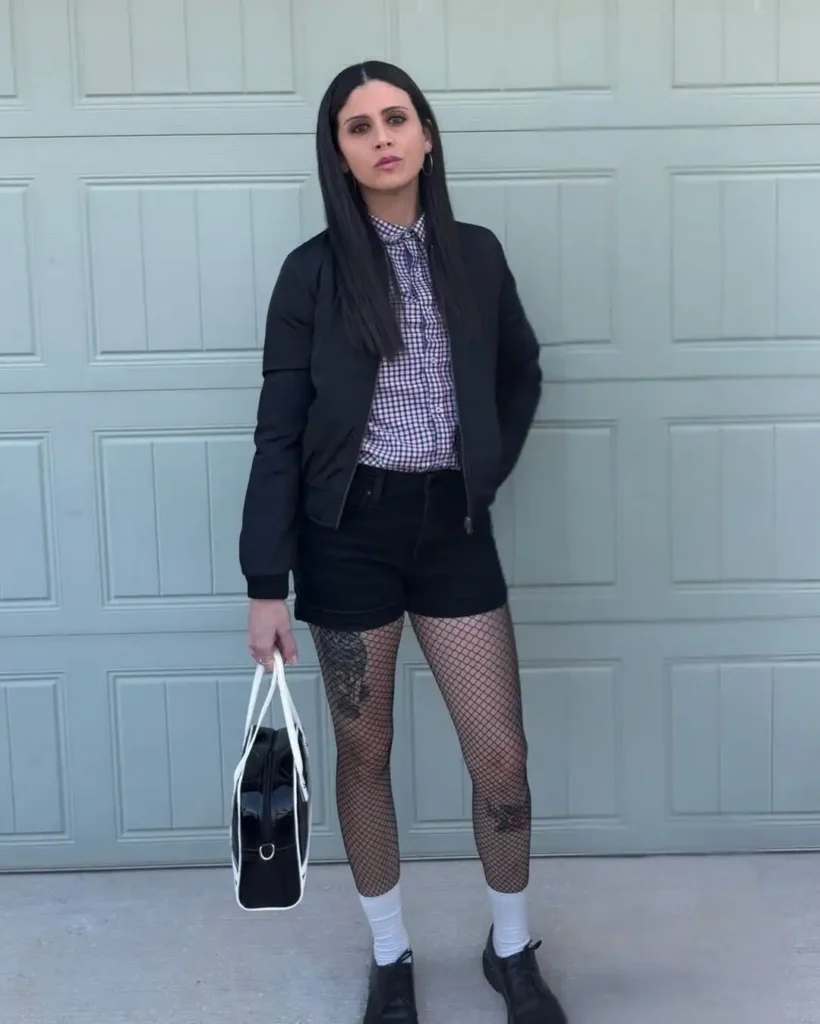
© Nay’s Instagram
How did you grow up? How were things back then?
I was born in the mid 80’s out of a working class household. I was exposed to great music since I was little. My sisters doubled my age and they were part of the subcultures. I was lucky to have access to really cool outfits and music at an early age.
What first drew you to subcultures when you were 12 in Puerto Rico?
My sister had cassettes with punk and hardcore music. Many of these bands were from Spain. Listening to the rhythms, and mostly to the lyrics, I immediately connected to what they were saying. Then, my sister took me to my first show when I was 12. The show was taking place in a community center. It was a show with bands that played mostly hard-core and hard-core Punk. In Puerto Rico, at the time, it was common to find people from multiple subcultures on all the shows. I remember looking at everyone thinking, I truly like how they look, and how they relate to each other.
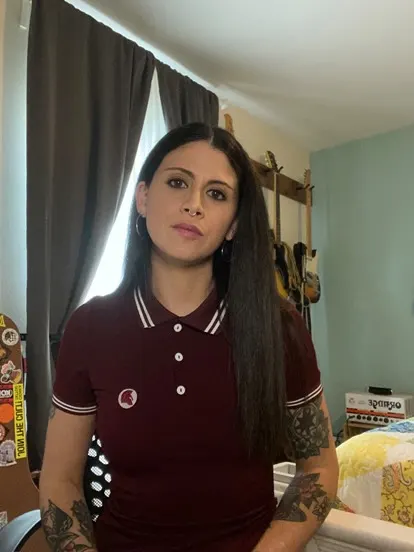
© Nay’s Instagram
Is Puerto Rico very different compared to other places?
Puerto Rico is a really small island in the Caribbean that is only 100 x 35 miles. Nevertheless, it is rich in natural resources, history, and culture. We have extremely diverse natural resources, from rainforests, rivers, and many beautiful beaches. We love to meet and have a good time with our families and friends. We truly look for any excuse to hang out! And our food is delicious.
Background & culture
So what keeps you busy in your daily life?
Family, work, pets, reading, and my podcast Beats & Boots: Music and Subculture Stories!
How did you first become involved in the alternative culture, and what attracted you to it?
After going to some shows with my sister, I spoke with two of my friends in Middle School and convinced them to go to a show. This show was punk and Oi! Music Show. Everything changed after that. I saw all the punks with the color in their hair, the cool haircuts, patches, and pins. The Skinhead CPPR crew. All with great outfits and having a good time. That was my moment of realization where I thought, “This is the place I found myself”.
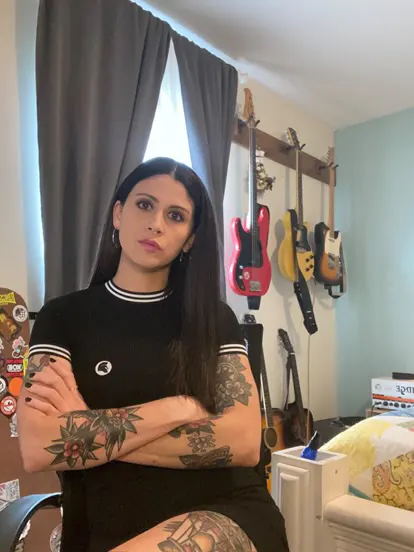
© Nay’s Instagram
How would you describe yourself? Skin, rudegirl? What subculture suits you the most?
When I started in the Puertorrican scene, I started as a Punk. We will share copies of music compilations in audio cassettes with the music we found with other people. We order music by mail, mostly from Spain Record Stores. I always liked how the Rudeboys, Rudegirls, and Skinheads/ Skingirls looked. When I was 15 years old, I started with who my husband is today. He gave me a tape compilation with Oi! Songs. I discovered bands such as Oi! The Arrease, Alta Tension, Decibelios, and N.S.A-Non Servium Army from Spain, Klasse Kriminalle from Italy, Odios Simple from P.R, among many others.
Then, I remember someone found a full Oi! compilation called Lords of Oi!. In that compilation we discovered classic bands in English, such as Cock Sparrer, Blitz, The Business, Sham 69, among many others. Between the music, the culture of unity and the amazing style, I felt Identify with this subculture since then.
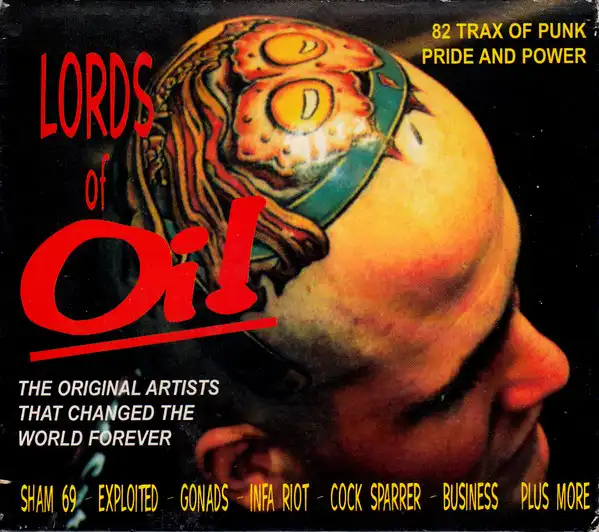
See release on Discogs
Beats & Boots
So tell us a bit about your podcast! What is Beats & Boots exactly?
Beats and Boots: Music & Subcultures Stories is a video interview podcast dedicated to connecting with and sharing the experiences of individuals involved in the Skinhead, Skingirl, Rude Boy, Rude Girl, 2-Tone, Punk and other subcultures from around the world. Through meaningful conversations, we aim to celebrate and preserve the unique journeys of those in these communities, creating a space for connection and understanding on a global scale.
The goal of these interviews is to explore our guests’ personal journey within the subculture—how they were introduced, the impact music had on shaping their identity, and their experiences navigating the scene as an adult. The interviews are collaborative and open conversation where we dive into our guest stories, share the music that influenced them, and discuss the challenges and joys of being part of these communities.
What inspired you to create Beats & Boots?
The music, the sense of community, and the culture of subcultures like Punk and Traditional Skinhead played a defining role in my life. I always wonder how experiences of these subcultures were around the world. I have a bachelor’s degree in Art of Education specializing in Social Science and Ancient History, and currently pursuing a master’s in Social Studies & History. I want it to explore and document how subcultures impact people’s lives globally. This inspired me to create Beats & Boots, a platform dedicated to documenting personal stories from all continents, reflecting on both shared experiences and cultural differences. I also want it to create a space to educate and to break stereotypes.
How do you come up with the people to interview?
I want it to be sure this project includes all experiences in the subculture and has representation and people of different countries. I reflected on bands and projects I knew, with female representation and musicians from a variety of countries. In Season 1 I was able to have guests from 3 continents and 6 different countries. I was extremely lucky with all my Season 1 guests. They all were willing to participate and share their experiences in the show. I am truly thankful for them.
What lessons did you learn from the people while making this?
It is extremely fascinating to reflect on how many aspects of our experiences in the subcultures are similar. It is interesting how different the way we found music and learned about the subculture in Central and South America, from the people in Europe. Our distance, especially from people who started before 2000, make it really hard to find music and outfits from Europe. Nevertheless, the struggles, the joy, and the sense of unity and community are similar in all scenes.
What’s the most rewarding part of running Beats & Boots?
Being able to meet and talk to people who share so much with me, no matter the location in the world. To hear their stories and experiences. The difficulties they pass through and the joys we share. Also, it is awesome to discover new music and events from different countries. This experience has helped me get out of my comfort zone. I am kind of a shy person, and English is not my first language.
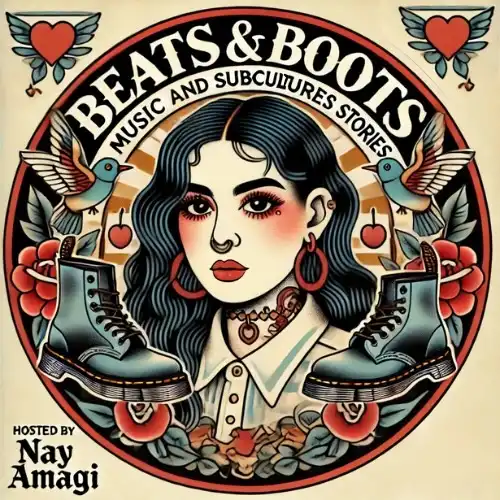
What can we expect from season 2?
People from a variety of subcultures and countries. Significative and deep conversations about the influence, impact and experiences of the subcultures and scenes, as we reflect on what we share and what can get better.
The scene
How do you experience the alternative scene in Puerto Rico?
I started in the scene around 1999-2000’s. Now, as an adult that I have visited scenes from other places, I can understand that our scene was really small. We knew everyone on the shows and we will recognize anyone new. Our scene was a mixed scene. The shows will have bands from many music styles. It was common to see in the shows people from the Hardcore, Punk, Gothic, Metal, Rudies, Skinhead, and other subcultures. We will collaborate to create Fanzines, patches, and organize shows.
I remember that we used to find Dr. Martens in a department store in Puerto Rico, and we would call each other to let us know if we found some boots for the people who need them. I started with my husband when I was 15 and he was already in many bands such as SteelToe and Por el Ayer y Por el Oi!. That gave me the chance to experience the subcultures from another perspective, and to meet many people.
What do you like about the alternative scene?
In Puerto Rico, most of the time we will have DJ’s playing music in between the bands. There were many awesome Puertorrican bands playing when I started. Bands such as Odio Simple, Los Negros Vivos, La Fundacion, Por el ayer y Por el Oi!, Los Espectros, Tropiezo, Steel Toe, Perro Enfermo, Cojoba, between many many more. There were shows almost every weekend. I am from a city called Bayamon and in this city the crew grew fast. We meet at someone’s house before the shows and shave our heads or/ and color it. Create styles and outfits and get ready to go to the next show.
Here in Florida, I do like the sense of community. The scene is small and so far welcoming. I am currently collaborating with my husband’s band Acta Non Verba, creating merch to sell at the shows.
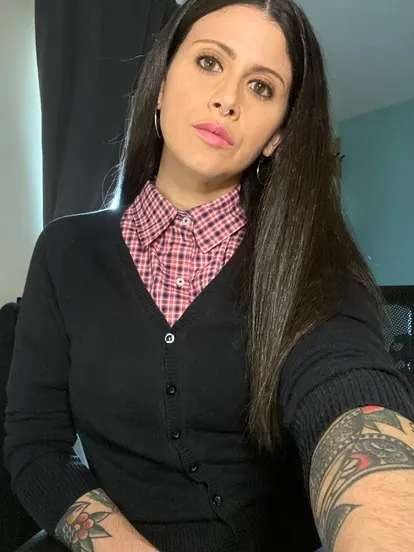
What do you HATE about the alternative scene?
I do not appreciate the stereotypes, especially around the Skinhead subculture. The ego or arrogance of some people. It is important we support each other, and collaborate to keep these subcultures alive and growing. I am completely against any type of prejudice, racist or discriminatory ideas that sadly have entered some scenes. We need to educate people and completely abolish these ideas.
What are some common misconceptions about alternative culture that you would like to clarify?
I recently heard this phrase again on the NYC The Oppressed’s show announcement; “You cannot be racist and be a skinhead”. The Skinhead subculture emerged in the late 1960s in working-class neighborhoods in the UK, influenced by the cultural exchange between British youth and Jamaican immigrants. The early Skinheads have since the beginning, a multicultural identity. By the late 1970s, a fraction of Skinhead became increasingly politicized, leading to divisions within the movement. These Skinheads aligned with the far-right political groups, like the National Front, fueled by anti-immigrant racist ideas. This led to the unfortunate stereotypes of Skinheads as racists or extremists, even though many were not. This stereotype was constantly shared in the media and news.
Hobby, music and free time
What do you like to do in your free time?
Family time, reading, listening to music, taking pictures, riding roller coasters, visiting museums, reading & learning about History, and traveling. Recently, working on Beats & Boots Interviews.
What kind of music do you like? What’s your top 5 artists/bands?
Rocksteady, ska, Oi!, punk, salsa, and many more different music genres. Some bands that truly impacted and influenced my identity when I started in the shows were; from Spain MCD, El Ultimo Ke Zierre, Los Muertos de Cristo, Oi! The Arrase, Non Servium, Parabellum. From Puerto Rico Los Espectros, Cojoba, Tropiezo, Por el ayer y por el Oi!, Odio Simple, Brigada 99, Cojoba.From other parts of Europe Cock Sparrer, The Business, Sham 69, Kaleko Urdangak, Arkada Social, Klasse Kriminale, and many more. From the Rocksteady, ska and 2 tone genres; Derrick Morgan, Alton Ellis, Keith & Tex, The Pioneers, Skatalites, Tot & The Maytals, Symarip, The Specials, Madness, among many more.
This week’s Spotify list was CRAN, Camera Silens, Kaleko Urdangak, Travellers All Stars, Beton Arme, Acta Non Verba Oi!, The Stress, and Arkada Social.
What’s the best concert you have ever attended? And why?
There was a year in Puerto Rico that we received some bands from Spain, such as Reincidentes, Sin Dios, La Polla records, among others. It was the first time I saw bands from other countries. We were a big crew and really young. We had a blast.
I went to the Chicago Reggae Fest a few years ago. I was able to see Derrick Morgan, Keith & Tex,Toots & the Maytals, Lee Perry among other important Rocksteady and Ska musicians, all the same day. It was an honor to be able to see them playing.
Choose quick!
Left or right?
I write with my right and do everything else as a left handed.
Bright or dark?
Grey
Beer or wine?
Beer!
Boots or sneakers?
Boots to dress up, sneakers to work.
Car or bike?
Bike!
Cats or dogs?
Cats!
Future & society
What do you think the future holds for alternative culture? Is it still a bit the same with the same fashion or do you think it will die out in some form?
It will all depend on how we support the new youth and new projects in the shows, they are the generation who can keep this alive. It is also important that people from the subcultures around the world support the people who are doing things to keep the subculture alive. Likes on media platforms are important and greatly appreciated, but also try to show up the local shows, buy merch, listen and share to the podcast and digital media projects, buy clothes and records from businesses that are part of the subcultures,and create new bands. And more importantly try to build community in your scene and the scenes that you visit.
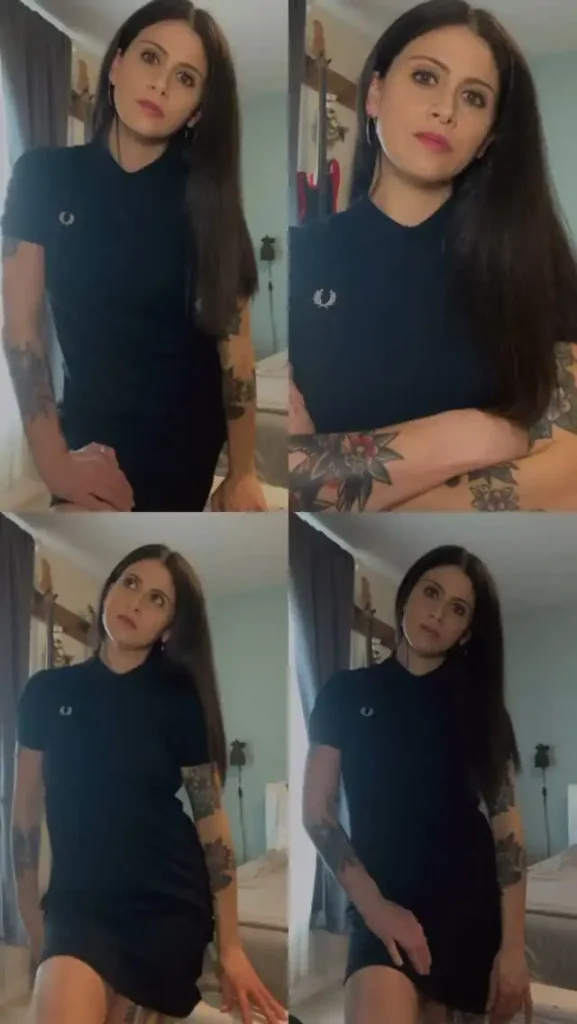
What’s the message you would like to spread?
Beats & Boots is founded on the principles of inclusivity, respect, and unity. The conversations and stories we share are entirely anti-racist, anti-discrimination and anti-prejudice. We stand firmly against any form of hate, racism, sexism, or other discriminatory behaviors. Music and subcultures have the power to unite people, and this program is dedicated to creating a space for positivity, connection, and shared experiences. As it should be everywhere in all the subcultures, scenes and communities.
What should people think when they see you walking by?
People need to educate themself. The amount of stereotypes that surround our subcultures is terrible. Having tattoos or piercings or dressing differently should not be an excuse for people to be disrespectful or to not take us seriously.
To wrap it up
What are your personal plans for the future? How do you see yourself in 5 or 10 years?
I want to finish my graduate studies, and I want to research more about the Skinhead and Punk subcultures’ influences, impact, and significance. I want to travel more and catch good bands on the way as I continue meeting people from around the world.
Final question: anything you would like to add to the readers and followers of All Buttoned Up? 🙂
I want to thank all the people who are supporting digital media projects such as All Buttoned up and Beats and Boots. I am grateful for how people have received the project. I originally wanted it to research about the experiences in the subcultures and how they have impacted our self and identities. I end up with this idea, and it turns out many people are interested in the same topics as me. Thank you! Stay tuned for Season 2 guest announcement in April 2025!
Start listening to Beats And Boots now!
Season one of Beats And Boots features an incredible lineup of guests who have significantly influenced the punk and skinhead subcultures. Episode 1 features Victor/Wattie from France, discussing his bands Lion’s Law, Rixe, and Bromure. In Episode 2, Lauren Delory from Canada shares her experiences with The Buzzers and Toy Tiger. Episode 3 brings insights from Aranivah from El Salvador with her band Ratas en Zelo, while in Episode 4, Rick/Prick from the Netherlands talks about his journey with Eastside Dogs. Episode 5 features Michi, representing both Argentina and Miami, speaking about Maxima-Axetone. Finally, in Episode 6, Ed from Albania and France discusses his band Cran.
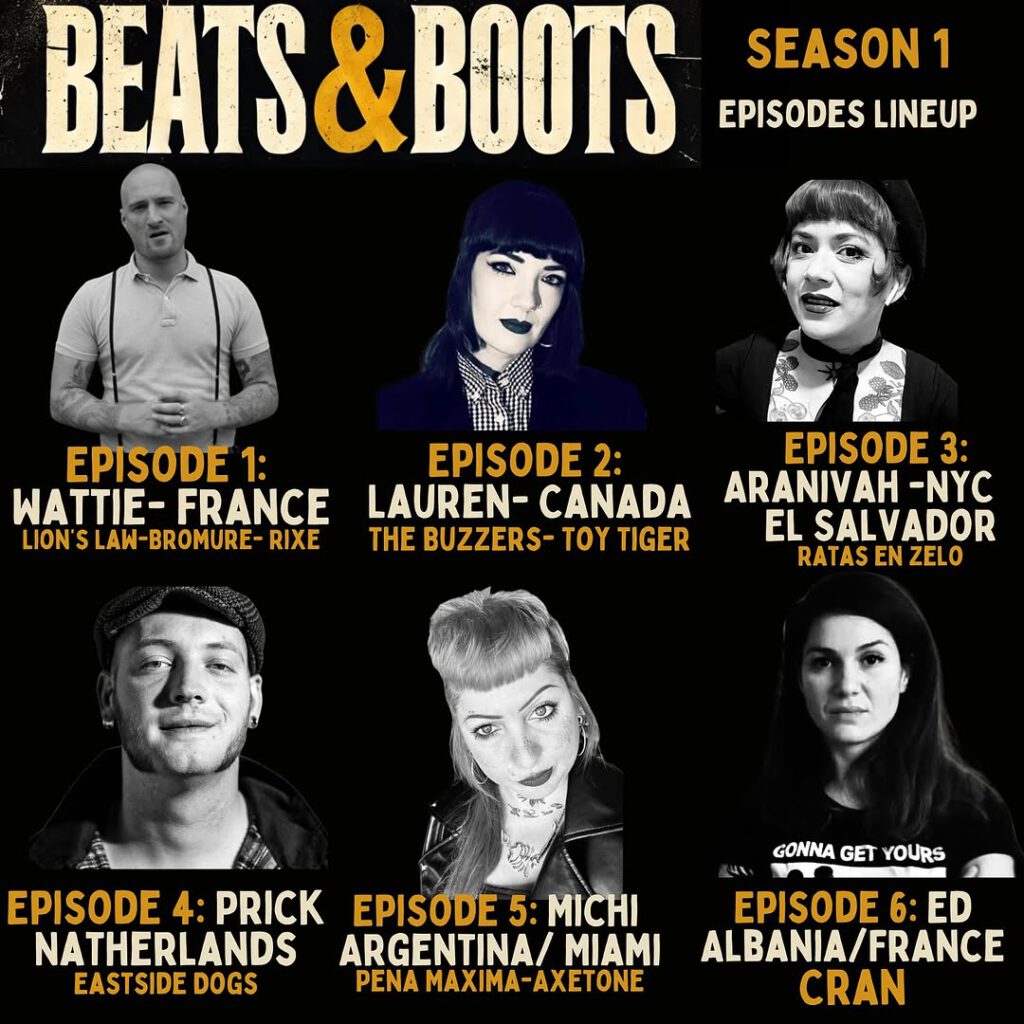
Episodes on YouTube | Episodes on Spotify | Beats And Boots Instagram
